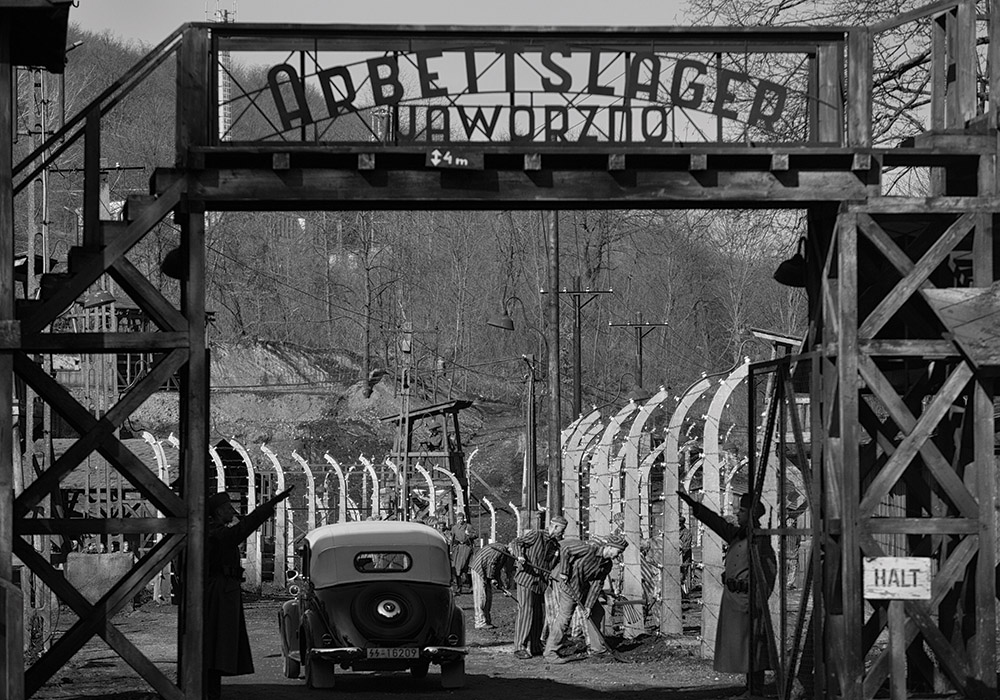
Courtesy of Leo Pinter/HBO

When producer Matti Leshem first brought me the script for The Survivor, I had a visceral reaction and knew I had to make the film. In part it was because I had known members of my own family who had survived the Holocaust, and I had seen its effects on their lives. But more so because I have always had an interest in telling the stories of the great immigrant experience that made this country what it is: a true melting pot that benefited from real diversity, not just of ethnicity but of thought. The Survivor is not a Holocaust film as much as a post-Holocaust film.
The true story of Harry Haft’s survival in the camps by fighting repeated gladiatorial death matches is harrowing, but it is the effects of that life as he emerges from the trauma on which the film focuses. The fundamental history of the U.S. is rooted in great waves of immigration; after World War II, there were only two countries that opened their doors to refugees significantly, the U.S. and the new state of Israel. Harry could have chosen either, but he already had family in the U.S.; because he was liberated by American soldiers, he also felt a kinship to the country.
When I embarked on the journey to make this film, it didn’t occur to me that I was telling any story other than Harry’s. In fact, the resonance of The Survivor rings too true today. While there is never any moral equivalency to be made to the horrors of the Holocaust or any other genocide (I’m reminded that the word “genocide” was created to describe this event), as I look around the world today, I am struck by the growing apathy for the war in Ukraine as it grinds on. A war on the same European soil where today tens of thousands of civilians are being murdered by an autocratic dictator. Just as America was late to enter World War II — it took President Franklin D. Roosevelt until 1942 to enter the war in spite of the fact that the administration knew of Nazi atrocities — similarly as a culture, we look away from the Russian invasion and acts of horror while satisfying ourselves that sending money and arms is enough. Further, within our own borders, the rise of neo-Nazism and acts of antisemitism are at an all-time high. Of course, neo-Nazis don’t just target Jews and have a virulent hatred of African Americans and all nonwhite minorities. It’s hard to imagine fascists rallying in our streets as they did in Nuremberg, but of course that’s exactly what happened in Charlottesville, Virginia, in 2017.

Courtesy of Leo Pinter/HBO
We now live in a world of total distrust. A world of villains. Scapegoats. Conspiracy theories. Where does it all go? During preproduction, we decided we needed to visit Auschwitz before filming began. The systematic elimination of millions of people is harrowing, to say the least. While we were standing on top of one of the crematoriums and listening to our guide speak, he took us back to the early 1930s. The rise of the Nazi party. The hate toward Jews in their propaganda. A longing to return to a more glorious past. And the beginnings of Jews losing their rights. As we stood along the road that led to the crematorium, he continued: “This is the road hate built. Who knew it would lead here, and to such horror?”
The cry of “Never Again” was meant specifically to coalesce us as a society around the common cause of not letting genocide return. In watching the film I made, I am reminded often how as a society we are failing at that. The effects of racism and fascism that lead to war should be intolerable to us always.
This story first appeared in an August stand-alone issue of The Hollywood Reporter magazine.